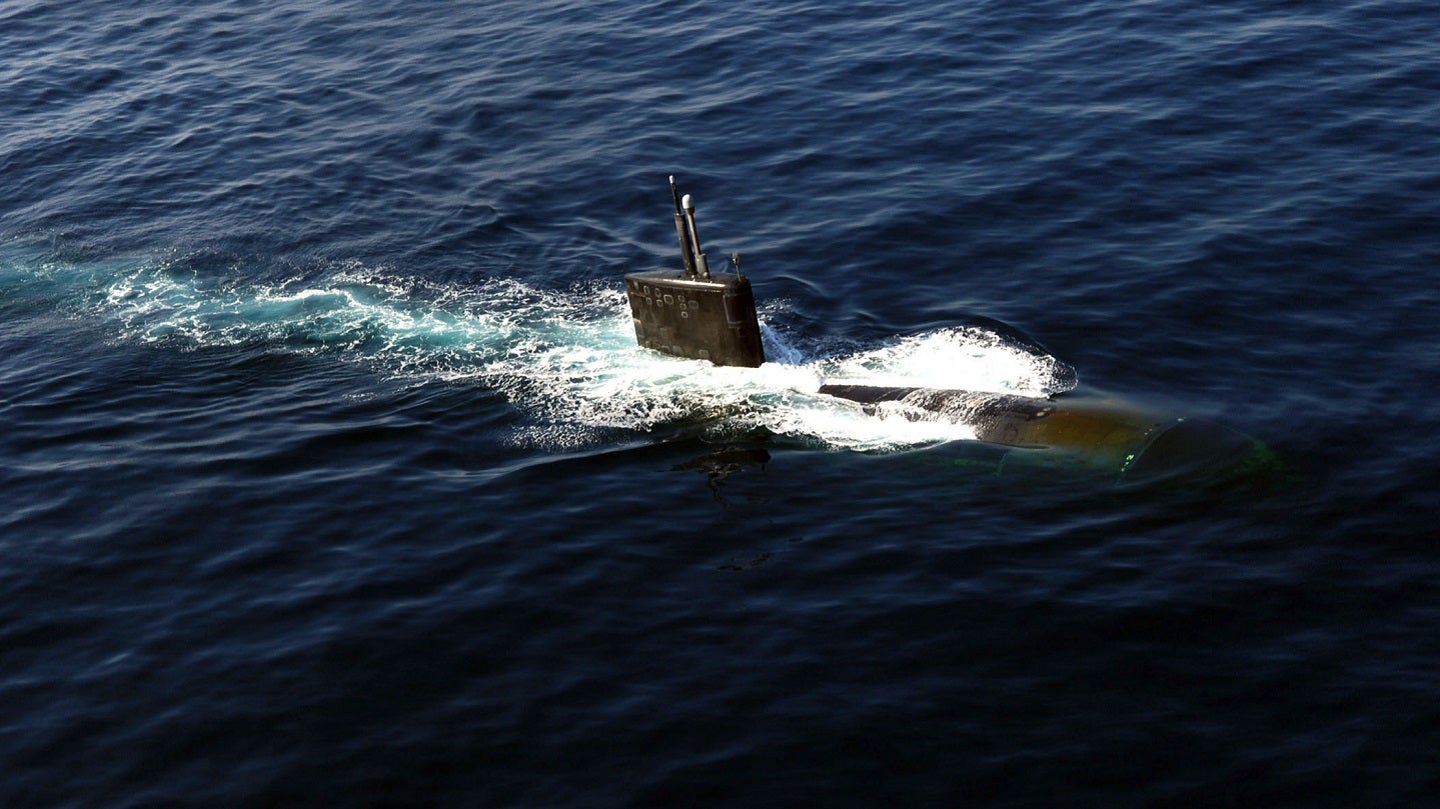
Why Did the US Tighten Controls on Nuclear Propulsion?
Following the US commitment to provide naval nuclear technology to Australia, Washington moved to explicitly state that no further countries will be permitted access to its naval nuclear propulsion technology following the historic agreement with Canberra which will see the Royal Australian Navy operate nuclear-powered attack submarines (SSN) under the AUKUS agreement.
Earlier in 2023, it was revealed that the US would sell up to five of its Virginia-class SSNs to Australia from the start of the 2030s, before Canberra would team with the UK – the third arm of the AUKUS triad – in the development of a new design submarine, dubbed SSN-AUKUS.
The Virginia-class SSNs are powered by the S9G nuclear reactor and can run for more than 30 years without the need for refuelling. Australian naval personnel are already embedded in the US military’s nuclear propulsion school, who will likely be tasked with returning to Australia to train the future generation of sailors who will operate the Virginia-class submarines.
Meanwhile, any UK design for the SSN-AUKUS is likely to utilise the Pressured Water Reactor 3 (PWR3) system, which is being developed for use in the Royal Navy’s future Dreadnought-class nuclear-powered ballistic missile submarines. Developed by Rolls-Royce in the UK, the PWR3 is an evolution of the PWR2 used on the in-service Astute-class SSNs.
Non-proliferation: “no intention of further sharing”
Speaking at the Washington Foreign Press Center on 15 March 2023, Anthony Wier, Deputy Assistant Secretary at the US Department of State’s Bureau of International Security and Non-proliferation, said that the sharing of nuclear technology with countries other than those in the AUKUS alliance would not be considered.
“We have been clear from the outset, we have no intention of sharing our naval nuclear technology further,” Wier stated.
Wier was keen to emphasise that the AUKUS deal would not risk the US falling foul of the nuclear non-proliferation regime, a mechanism that prohibits that spread of sharing of military nuclear technology, stating that the Australian submarine would be nuclear-powered, not nuclear armed.
“Australia is a non-nuclear weapons state [and] has made clear it does not seek nuclear weapons,” Wier said, adding that the provision of naval nuclear propulsion technology would occur “within the framework” of the Australian non-proliferation agreement with the International Atomic Energy Agency.
The shutting down of any notion of further provision of military nuclear naval propulsion technology in turn reduces the prospects that US allies in the Asia-Pacific region – such as South Korea – could hope to benefit from similar arrangements. South Korea’s advanced naval shipyards are able to produce conventionally powered diesel-electric submarines, but the political classes have long called for the development of an indigenous nuclear propulsion capability.
Where the UK went, Canberra will follow
The move by the US to help Australia in its efforts to become a nuclear naval power is not without precedent in Washington, with the UK benefitting in the late-1950s in its own efforts to integrate such technologies into the Royal Navy. The result of this, perhaps ironically, was the development of HMS Dreadnought, the first nuclear-powered SSN in UK service, powered by the S5W reactor from US atomic company Westinghouse.
Then, as now, the US saw the prospect in advancing an ally in order to create a capability to deter a potential threat or adversary. While the Soviet Union was the challenge then, in the 2020s Washington’s eyes have turned to the Asia-Pacific and China’s ongoing rise to superpower status.
Manufacture of the SSN-AUKUS will take place initially in the UK, with London and the US helping Australia develop its own indigenous manufacturing capability, possibly around Perth in the west of the country. Capacity at the UK’s military boatyard is tight, with little excess without additional investment in hard infrastructure and workforce.
Earlier reports that the UK would build the first of the AUKUS design SSNs for Australia have proved wide of the mark, with it now understood that the UK will provide technology and expertise to enable Australia to manufacture its own submarines in-country.
The build of the Astute-class boats in the UK has each taken between nine and 11 years, entering service every 2-4 years. Extrapolating these dates, manufacture of the SSN-AUKUS to meet the UK delivery timeline, and the “early-2040s” date for the delivery of Australia’s first SSN-AUKUS as it begins to replace the Virginia class bought from the US, would begin in the late-2020s at Barrow-in-Furness and a couple of years afterwards in Australia.
(This story, first published in March 2023, was updated in February 2024)



